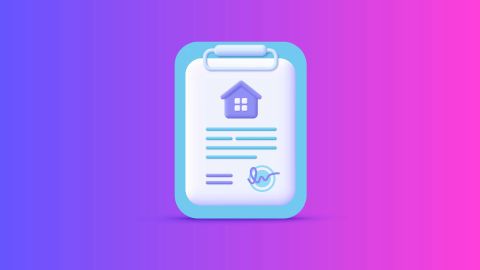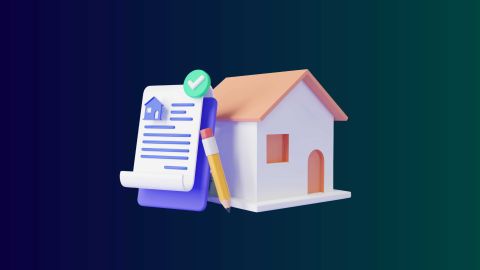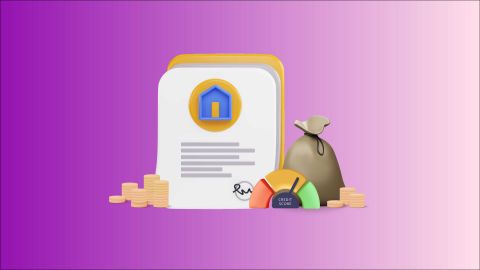Frequently asked questions
Once we receive the completed application form for bajaj finserv home loan along with the necessary supporting documents from you, this is how we proceed. First, we examine all the papers you’ve handed in. When these are found to be in order, you get sanctioned a certain amount, depending on factors like the amount you’ve asked for, the value of the collateral property, and your ability to repay loans (creditworthiness). If (for some reason) we decide not to sanction the loan, we’ll let you know right then. Next, our in-house lawyers and property experts verify your property documents. They then carry out a thorough technical examination of the property to evaluate it. Upon completion of both these procedures, Bajaj Finserv initiates the disbursement of your home loan.
It is not mandatory to have a co-applicant. If someone is the co-owner of the property in question, it is necessary that he/ she also be the co-applicant for the home loan. If you are the sole owner of the property, any member of your immediate family can be your co-applicant.
Once you have chosen the property, it is smart to plan your home financing requirements. When you apply for a home loan, this is what you are expected to do:
- Submit the application form
- Pay the processing fees
- Furnish the documents required
- Have a personal discussion with us
- Await investigation and verification
- Get the loan sanction
- Accept the loan agreement
- Await legal and property assessment
- Await loan disbursal
Keep in mind that the ‘sanction of loan’ and the ‘disbursement of funds’ are two entirely different concepts. Read on to know more.
Application form:
This is the primary document that your lender considers as the deciding factor in approving (or sanctioning) your loan amount. Your application form carries other documentation such as your personal information, your contact details, details of the property offered as collateral, the total cost of that property, the total loan amount required, details regarding your income, and the loan tenor requested. You’ll also need to include your processing fee cheque here.
Processing fees:
This is the fee applied to processing your application form and documents.
Documents:
You’ll have to submit a set of documents (see ‘Eligibility & Documents’ page for details). Take a look at the essential documents here but note that this requirement may change subject to your customer profile.
- Identity proof
- Address proof
- Income proof
- Proof of educational qualifications
- Age proof
- Employment details
- Bank statements
- Details about the property in case you have finalised it beforehand
You may change the address in either of the following ways:
- By calling us on 022 4529 7300 (call charges apply)
- By using your registered email ID to visit us by clicking here
- If your new mailing address is not the one for which the loan has been taken, you will need to visit us in person at your nearest branch along with an original and self-attested copy of your new address proof and photo identity
You may update your mobile number and email address in either of the following ways:
- By calling us on 022 4529 7300 (call charges apply)
- By using your registered email ID to visit us by clicking here
Provisional Interest Certificate gives the principal and interest breakup for the scheduled EMI for a complete financial year i.e., from April to March. This calculation can be used for claiming the income tax rebates on home loans in appropriate cases under Section 80C as well as Section 24 of the Income Tax Act.
The calculations are based upon current principal balances, current ROI, and current EMI along with any changes recorded in the current financial year. Any change that may happen before the end of the financial year will alter the calculation and the figures. You can get this in the following ways:
- By logging into our customer portal, Experia
- Visit us by clicking here
The provisional income tax certificate can change under certain circumstances like when there is a change in the interest rate. The projection is calculated on “as is” basis and does not consider any future change that may happen on the interest, EMI or the principal.
Three factors affect your EMI—how much you borrowed, the rate of interest, and the loan tenor. You can easily check your EMI by using the home loan EMI Calculator, which is based on a mathematical formula: E = [P x R x (1+R)^N]/[(1+R)^N-1] where E is the EMI, P is the loan amount and R is the rate of interest.
There are two ways of going about this.
- An Electronic Clearing Service (ECS) is an easy and convenient option, available exclusively to those who have a bank account. Your EMIs get paid out automatically from your account every month, at a specified date
- With Bajaj Finserv, you may also choose to hand in a fresh set of post-dated cheques (PDCs) ahead of time, from any bank account. Note that this is only for those customers in non-ECS locations
ECS is the preferred mode, as it’s faster and there are no chances of errors. Plus, there’s no hassle of replacing PDCs when the EMI changes or when they run out.
When there’s an unexpected increase in interest rates, we first attempt to make things easier on you by increasing the loan tenor—within permissible limits. If this doesn’t resolve the issue—covering interests under current EMI—we will need to increase the EMI. Another solution is that you can make a partial prepayment at the nearest branch to reduce the interest amount. Alternatively, you can choose to part-prepay online via our Experia portal.
Get in touch with us to change your EMIs and then based on how you pay your EMIs, you can make the change. This may by electronic methods (ECS), by handing in post-dated cheques, or through direct payments.
- Going in for the ECS option, you’ll need to pay the revised amount from the subsequent month. In this case, you’ll be paying the differential amount separately, during the current month.
- If you’re going with the PDCs, you’ll need to completely replace your old cheques. No matter what your method of payment is, it goes without saying that the EMI needs to be paid before the due date.
You can increase the EMI amount whenever you choose to during the loan tenor. Taking advantage of this, you can reduce the timeline of repayment and save money. To avail this option:
- Login to Experia
- Visit us by clicking here
When interest rates go up, the interest component of an EMI also goes up. The EMI is kept constant, which results in a lower principal component. If the rates move up continuously, then there might be a situation where the interest component becomes more than the EMI. In such a situation, principal component (EMI minus interest component) gives a negative figure.
Consequently, the outstanding balance, instead of being reduced from the opening principal with the principal component, gets increased with the negative principal component. This is commonly referred to as negative amortization.
A loan where the amortization is negative does not get repaid, since the regular payments are insufficient to cover the interest component. The unpaid interest gets added to the principal and makes it grow. The situation is reversed only when interest rates start falling. The customer can make a part-prepayment or increase the EMI in such situations.
In case of a home loan with a variable rate, the interest rate used to calculate the interest component is subject to variation. When rates change, one of the following changes can be done to a loan:
- The term of the loan is extended (when rates go up) or contracted (when rates go down)
- The instalment (EMI) amount is reset (increased in case rates go up and reduced in case rates come down)
- As a practice, the term of the home loan is extended since the customer may have given PDCs and it would be difficult to replace them for every rate change. However, in case of under-construction properties, the pre-EMI amount is increased by default
As a practice, we do not permit loans that amortize negatively i.e., where the EMI is insufficient to meet the interest component for a home loan. However, in case the EMI for a home loan is falling short of the interest component, the customer is informed immediately and offered one of the following remedial options:
- Change the EMI suitably to match the balance tenor, which is the default option
- Consider a lump sum part-prepayment
- A combination of both depending upon the customer’s convenience
In case the interest component exceeds 85% of the EMI amount at any time, consider it a warning. This will ensure that variation in interest rates does not cause any inconvenience.
Internal FRR is the benchmark reference rate. This is determined on the basis of market conditions and the cost of funds for the company. These changes depend on various external factors and economic conditions.
As per our re-pricing policy, home loan interest rates are reviewed every 2 months and a decision is taken whether to change the interest rates or not.
As a goodwill gesture and to maintain transparency with our valued, existing self-employed customers, we ensure through our pro-active downward re-pricing strategy, that none of our existing customers are more than 100 bps over and above the last 3 months’ average sourcing rate.
If customers are higher than 100 bps from our last 3 months’ average sourcing rate, we carry out downward re-pricing of the rate of interest for them. This brings them to maximum 100 bps above the last 3 months average sourcing rate. This is a bi-annual exercise. This is yet another industry-first for any NBFC in the country.
Home loans sanctioned for under-construction properties are disbursed in installments by us.These disbursements made in instalments are called part- or subsequent disbursements. You will need to make an online request to us for part-disbursement.
The time taken by us depends on which category your property falls under. We categorise every property into APF (Approved Project Facility) and Non APF. The time taken for processing a part disbursement would be:
4 working days: If the property is part of APF
7 working days: If the property is part of Non APF
You will need to submit an online request for part disbursement to us along with the following documents:
- Scanned copy of demand letter from the builder
- Receipt of last payment made to the developer
No, foreclosure of your loan will have no impact on your CIBIL score. Once the loan is foreclosed it will be reported to CIBIL as ‘Closed’.
Pre-EMI interest is the interest that you need to pay on the amount you borrow from us. Commencing from the date of each disbursement, you can pay it each month, until EMI payments start.
The TAT for the issuance of a foreclosure statement is typically 12 working days.
For such matters you can escalate your issue to the concerned person as mentioned below:
Product |
Contact Person |
Mobile Number |
Email Id |
Home Loan (North West) |
Jaspreet Chadha |
9168360494 |
jaspreet.chadha@bajajfinserv.in |
Home Loan (South East) |
Francis Jobai |
9962111775 |
francis.jobai@bajajfinserv.in |
Rural Loan |
Kuldeep Lowry |
7722006833 |
kuldeep.lowry@bajajfinserv.in |
Loan Against Property |
Pankaj Gupta |
7757001144 |
pankaj.gupta@bajajfinserv.in |
Lease Rental Discounting |
Vipin Arora |
9765494858 |
vipin.arora@bajajfinserv.in |
Developer Finance |
Dushyant Poddar |
9920090440 |
dushyant.poddar@bajajfinserv.in |
Professional Loans |
Nirav Kapadia |
9642722000 |
nirav.kapadia@bajajfinserv.in |
A mortgage origination fee is a fee levied by a lender to process a home loan application. It ensures that the lender processes your home loan application smoothly, and on time. When you pay a mortgage origination fee to your home loan provider, you get the following benefits:
- Soft copy of the sanction letter (valid for 60 days)
- Dedicated relationship manager to assist you with the loan application procedure until disbursal
The term ‘repo’ denotes a repurchase option or agreement. The Reserve Bank of India (RBI) lends money to commercial financial institutions at this rate, which is subject to changes as per the current policies. With an increase in repo rate, the cost of credit increases for commercial banks, thus making loans expensive for them. It limits their capacity to borrow and prompts them to increase the rate of interest offered to retail borrowers for various loans and advances and vice versa.
The final lending rate for various products offered by us is arrived at after taking into account market reputation, repo rate, interest, credit and default risk in the related business segment, historical performance of similar homogeneous clients, profile of the borrower, tenor of relationship with the borrower, repayment track record of the borrower (in case he/she is an existing customer), subventions available, deviations permitted, future potential, group strength, overall customer yield, nature and value of primary and collateral security.
Such information is gathered based on information provided by the borrower, credit reports, market intelligence and information gathered by field inspection of the borrower’s premises. The rate of interest for the same product and tenor availed during the same period by different customers need not to be standardised. It could vary for different customers depending upon any or a combination of the factors listed above.
We offer a repo rate linked interest rate to customers as per our internal underwriting policy (T&C apply).









